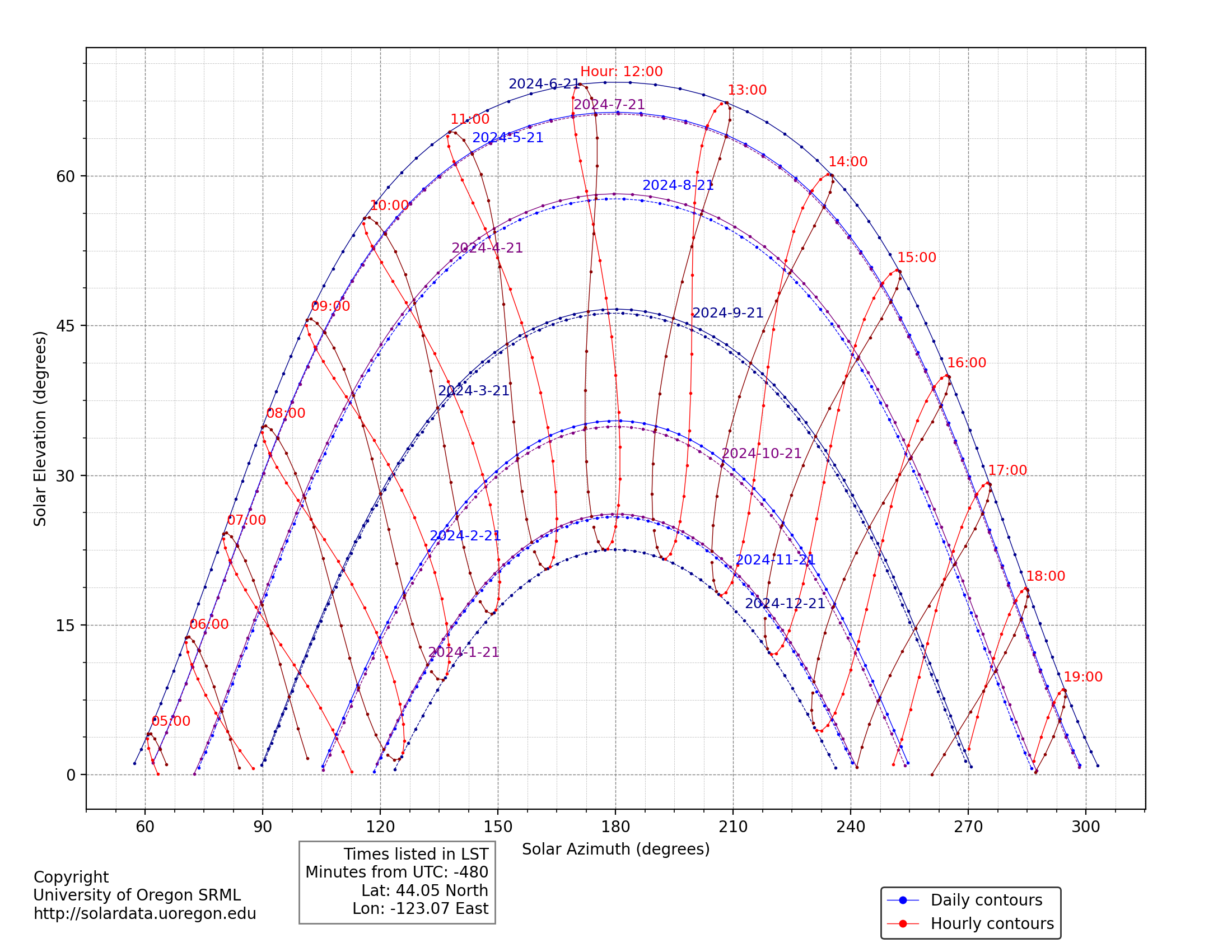About sun path charts
Sun path chart basics
A
sun path chart
plots the sun's elevation and azimuthal angles throughout the day for different days of the year
for a given location.
The elevation angle is a measure of the height of the sun in the sky from the horizon.
The horizon is an elevation angle of 0°.
Straight up is an elevation angle of 90°.
The azimuthal angle is a measure of the North/East location sun in the horizontal plain.
North is defined is an azimuthal angle of 0°.
East is defined is an azimuthal angle of 90°.
South is defined is an azimuthal angle of 180°.
West is defined is an azimuthal angle of 270°.
Sun path charts also indicate the time of the day for different days of year.

Using sun path charts for site analysis
Sun path charts are useful when identifing when an obstruction will block a collector from direct sunlight.
To use the chart for site analysis you will need a compass and a clinometer.
With the compass, the azimuthal angle of objects can be determined.
Note: A compass reads magnetic north (not true north).
So a correction must be made to find true north from the compass.
A clinometer is a device used to determine the angular height of an object.
The clinometer will provide the elevation angles of surrounding obstructions.
With this information, the locations of the obstructions for a site can be drawn on the sun path chart.
From this, the duration of time and number of days an obstruction will shade as site can be determined.
Shade analysis forms using the TMY2 database are useful to estimate
the percentage of the total annual output of electricity produced by a
photovoltaic system when the sun is in various sectors of the sky.
Instructions and samples on using the shade analysis forms can be found here.
Instructions
Sample in Cartesian coordinates
Sample in polar corrdinates

